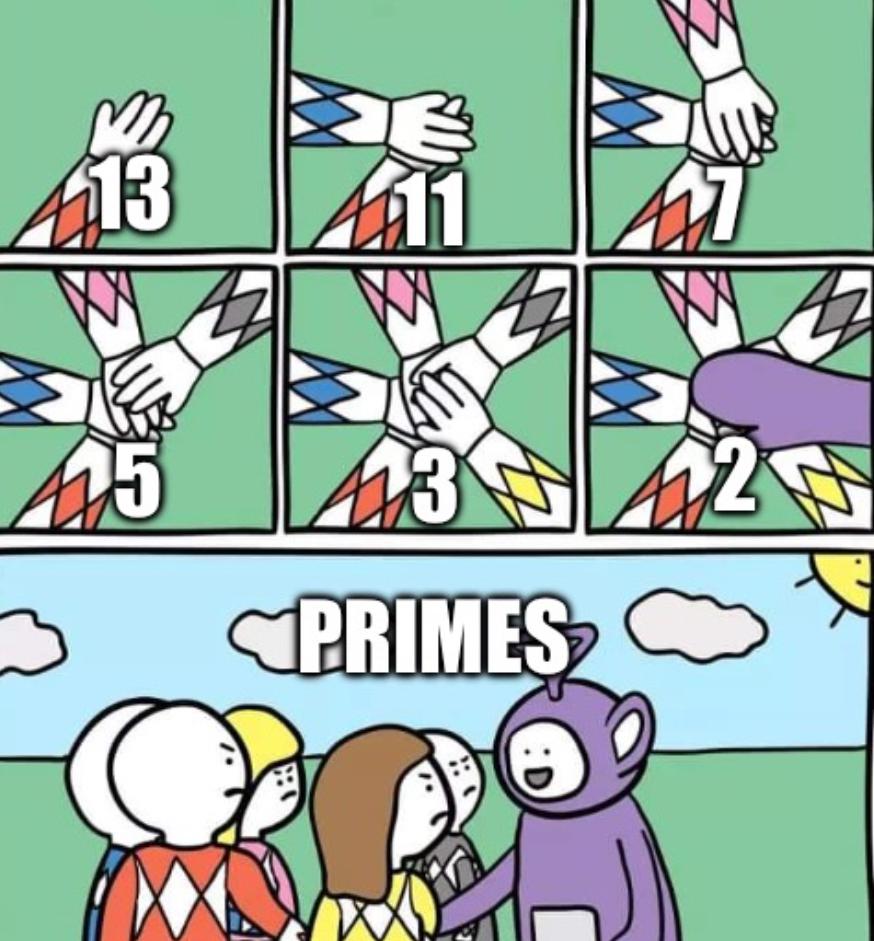this post was submitted on 09 Aug 2023
630 points (94.9% liked)
Memes
45585 readers
2094 users here now
Rules:
- Be civil and nice.
- Try not to excessively repost, as a rule of thumb, wait at least 2 months to do it if you have to.
founded 5 years ago
MODERATORS
you are viewing a single comment's thread
view the rest of the comments
view the rest of the comments

There is multiple things wrong here.
1 is not a prime number because it is a unit and hence by definition excluded from being a prime.
You probably don't mean units but identity elements:
There are more units in R than just 1, take for example -1(unless your ring has characteristic 2 in which case thi argument not always works; however for the case of real numbers this is not relevant). But there is always just one identity element, so there is at most one "1" in any ring. Indeed suppose you have two identities e,f. Then e = ef = f because e,f both are identities.
The property "their prime factorisaton only contains trivial prime factors" is a circular definition as this requires knowledge about "being prime". A prime (in Z) is normally defined as an irreducible element, i.e. p is a prime number if p is not a unit and p=ab implies that either a or b is a unit (which is exactly the property of only having the factors 1 and p itself (up to a unit)).
(R,×) is not a ring (at least not in a way I am aware of) and not even a group (unless you exclude 0).
What are those "general prime elements"? Do you mean prime elements in a ring (or irreducible elements?)? Or something completely different?
You're mostly right, i misremembered some stuff. My phone keyboard or my client were not capable of adding a small + to the R. With general prime elements I meant prime elements in a ring. But regarding 3.: Not all reducible elements are prime nor vice versa.
That's why I wrote prime number instead of prime element to not add more confusion. I know that in general prime and irreducible are not equivalent.